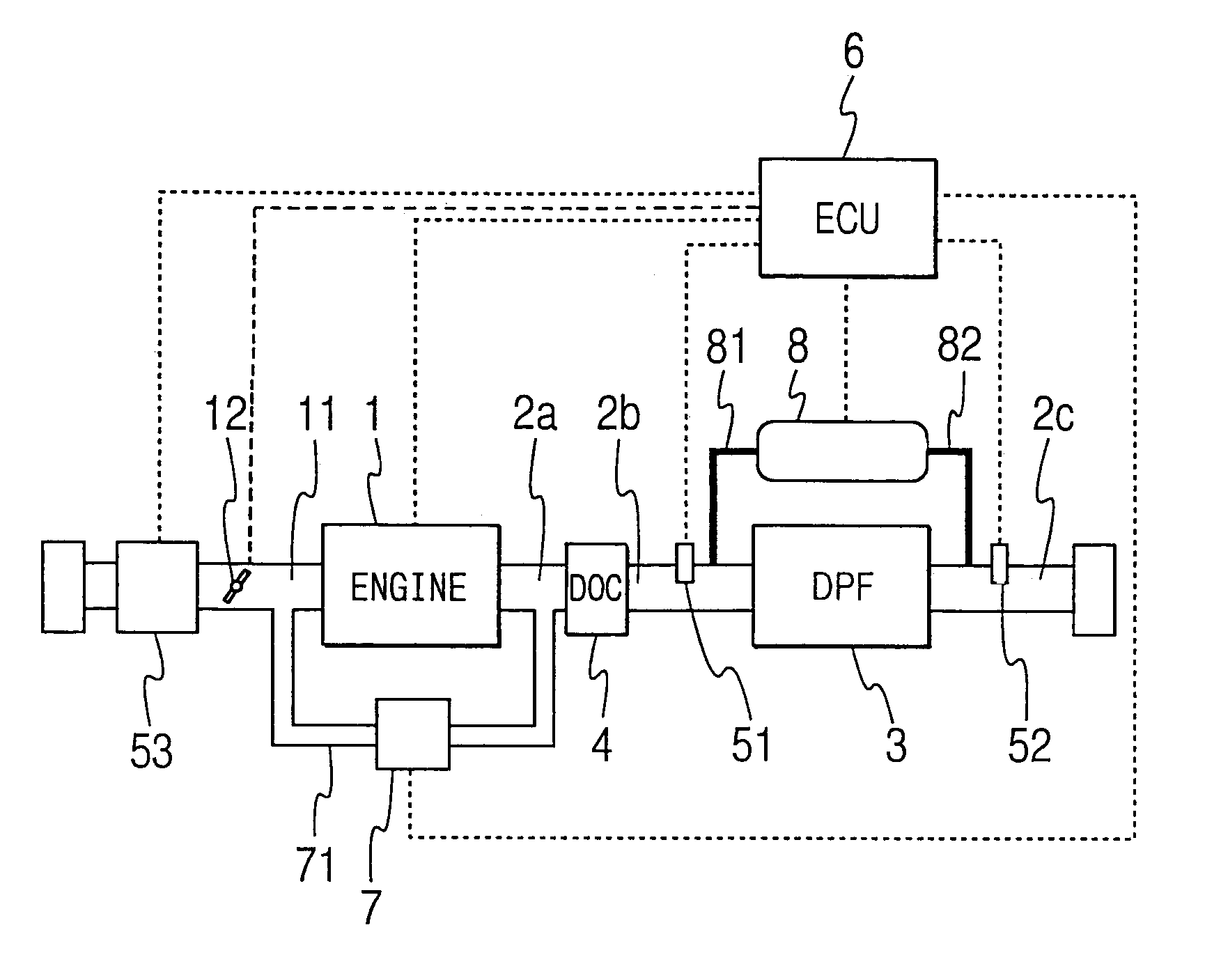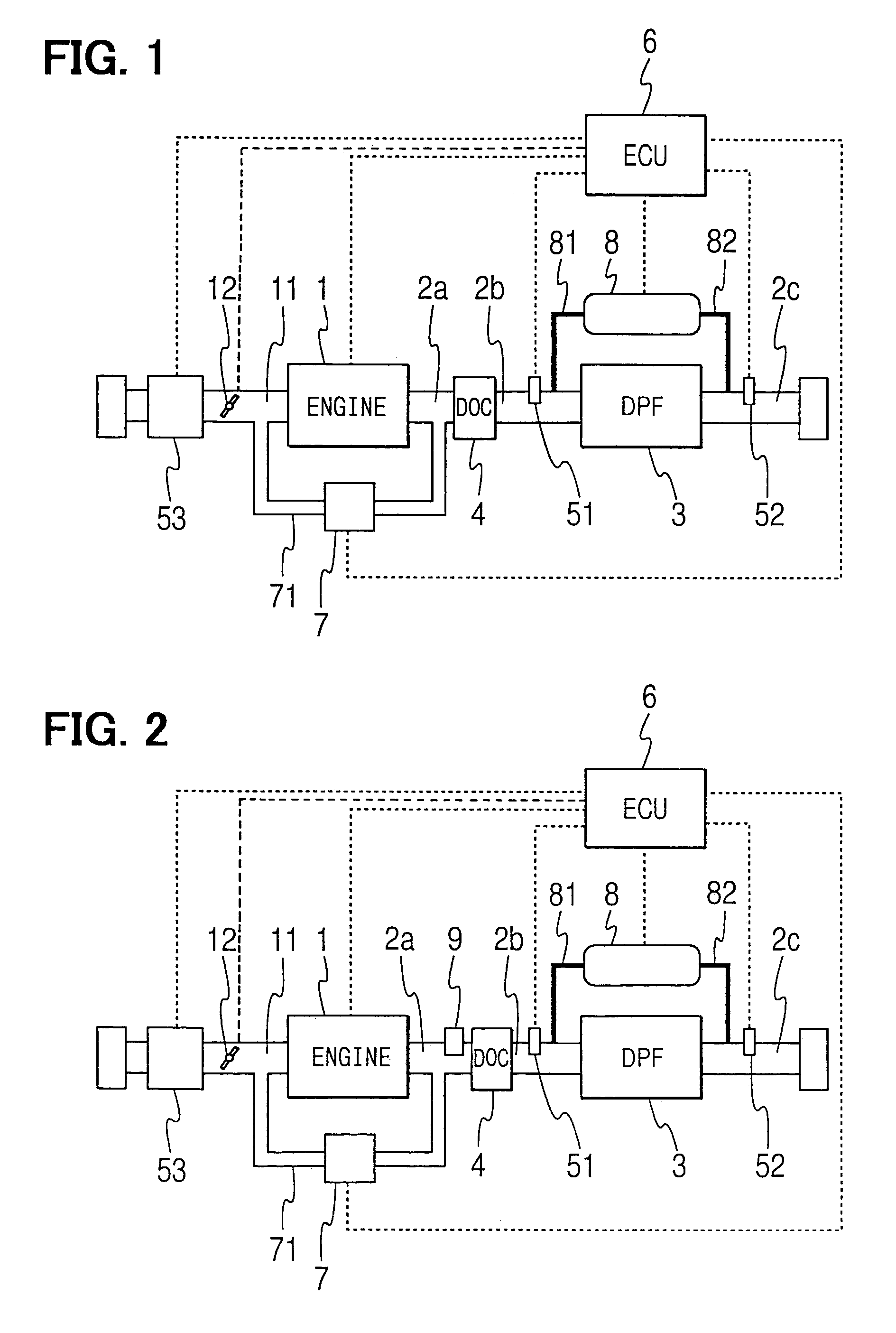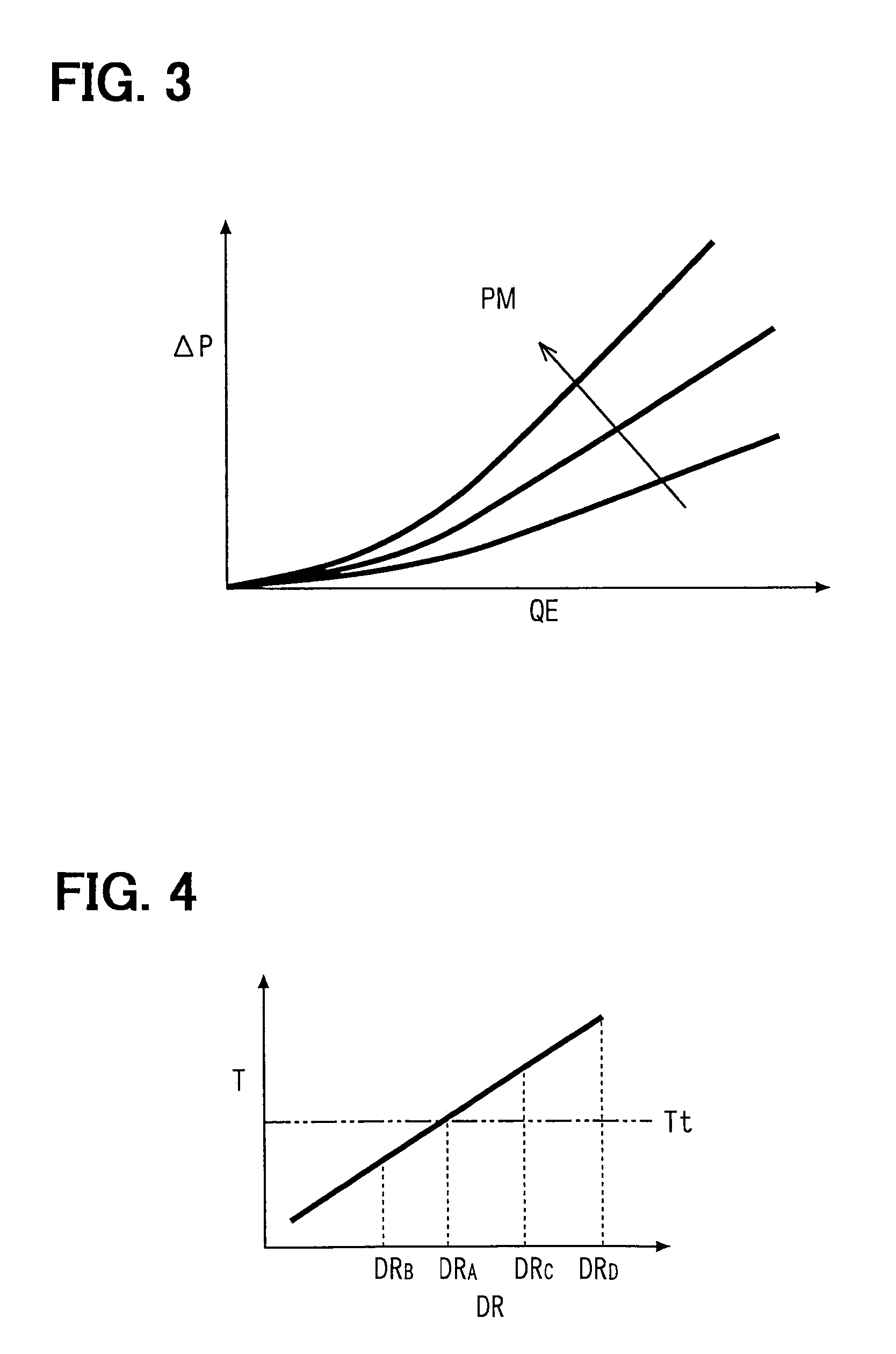Exhaust gas cleaning system of internal combustion engine
a technology of exhaust gas and cleaning system, which is applied in the direction of machines/engines, output power, electric control, etc., can solve the problems of possibility of damage to the dpf, and achieve the effect of preventing deterioration of oxidation catalysts, preventing deterioration of fuel consumption, and preventing damage to particulate filters
- Summary
- Abstract
- Description
- Claims
- Application Information
AI Technical Summary
Benefits of technology
Problems solved by technology
Method used
Image
Examples
first embodiment
[0033]Referring to FIG. 1, an exhaust gas cleaning system of a diesel engine 1 according to a first embodiment of the present invention is illustrated. As shown in FIG. 1, a diesel particulate filter (a DPF) 3 is disposed between exhaust pipes 2b, 2c, which form an exhaust passage 2 of the diesel engine 1. An oxidation catalyst (a diesel oxidation catalyst: a DOC) 4 is disposed upstream of the DPF 3, between exhaust pipes 2a, 2b. The DPF 3 is a ceramic filter having publicly known structure. For instance, the DPF 3 is formed of heat-resistant ceramic such as cordierite in the shape of honeycomb structure having a multiplicity of cells as gas passages provided by separation walls. An inlet or an outlet of each cell is blocked alternately. The exhaust gas discharged from the engine 1 flows downstream while passing through the porous separation walls of the DPF 3. At that time, particulate matters are collected and accumulated in the DPF 3 gradually.
[0034]The DOC 4 has publicly known s...
second embodiment
[0058]Next, regeneration control performed by an ECU 6 according to a second embodiment of the present invention will be explained based on FIG. 12. In the second embodiment, the duty ratio DR is changed continuously in accordance with the DPF temperature T. First, in Step S201, the ECU 6 receives the exhaust gas temperatures T1, T2 from the exhaust gas temperature sensors 51, 52, which are disposed upstream and downstream of the DPF 3 respectively. In Step S202, the DPF temperature T is calculated based on the exhaust gas temperatures. T1, T2. The temperature T1 or the temperature T2 may be simply employed as the DPF temperature T. Alternatively, the DPF temperature T may be calculated from the temperatures T1, T2. In Step S203, the particulate matter accumulation quantity PM of the DPF 3 is estimated. For instance, the particulate matter accumulation quantity PM is estimated from the pressure difference ΔP across the DPF 3 sensed by the pressure difference sensor 8 and the exhaust...
PUM
 Login to View More
Login to View More Abstract
Description
Claims
Application Information
 Login to View More
Login to View More - R&D
- Intellectual Property
- Life Sciences
- Materials
- Tech Scout
- Unparalleled Data Quality
- Higher Quality Content
- 60% Fewer Hallucinations
Browse by: Latest US Patents, China's latest patents, Technical Efficacy Thesaurus, Application Domain, Technology Topic, Popular Technical Reports.
© 2025 PatSnap. All rights reserved.Legal|Privacy policy|Modern Slavery Act Transparency Statement|Sitemap|About US| Contact US: help@patsnap.com



